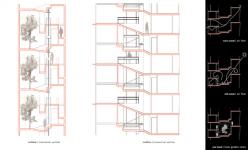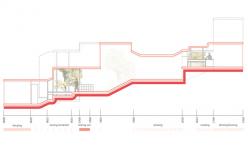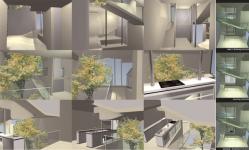When waking up at 6.00 the kitchen arrives and begins with its usual sounds, in the kettle the water is boiling and the toasts pop out. We have a quick breakfast and we go out to work and study. Twelve hours we are away from home. When coming back, we relax ourselves in the wasitsu where tradition and innovation are combined in harmony. The kitchen is waiting and after a while the aroma calls me. They continue watching their favourite TV show. While I enjoy this pleasant view I finish cooking. It’s time to dinner.
It is almost midnight and we take shelter in our beds. Tomorrow is a new day. We wake up at 6.00 when hearing the sounds of the kitchen.
A key aspect of the project is its sustainability. The main day-lighting system is with sunlight: in addition to the natural daylight entering through the windows, the house has a fiber-optic system that introduces sunlight in the rest of the house, especially in the inner garden providing with the necessary natural light for the plants and trees. This garden provides the house with an outstanding natural ventilation and heating system. Trough special materials and an efficient window and shutter system the use of not renewable energy is minimised. In addition, the house is a digitalised space, not only because of its use of TV, DVD, and PC projectors but also because its surfaces are digitalised in terms of conceptualisation and information. The slopes, valleys and multi-height places are the appropriate ones to create a space were the individual desires of each family member are taken into account; and where communication, co-operation and binding among family members can harmoniously take place.
As we enter the house by a mid level, we see an inner garden where, depending on the time, we can found the kitchen. It moves in this multiple height space, providing with the right environment for each situation. This is how the kitchen is in contact with all the spaces of the house an allows to whomever is there to share the activities of the other members of the family. Thus, the kitchen becomes a small cultural plaza, adapted not only to life but also to nature. Since the new media are giving our children a wider range of choices, the connection between the natural and the artificial becomes urgent. The smooth folding and unfolding shapes suggest and promote new and innovative uses of body, space and technology.
Thus the house puts froward a new inner environment not only for children but also for adults, making natural the artificial and artificial the natural. In conclusion, the house puts forward not only a new housing typology but also a new lifestyle for the contemporary society, considering the sustainability, and the local and global problematic, allowing the proliferation of this proposal beyond East and West.
2002
Favorited 1 times




